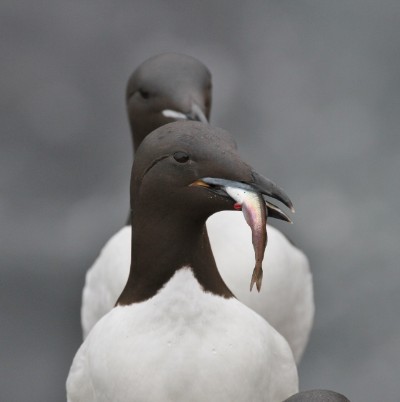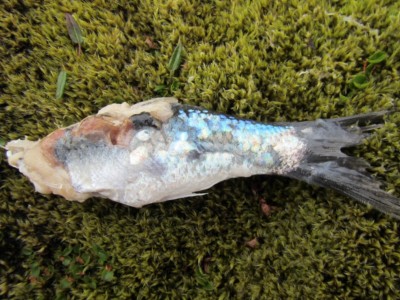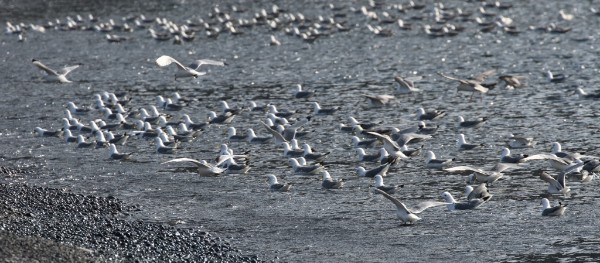Monitoring the seabirds’ diet
At the top of the marine food pyramid we find marine mammals and seabirds. Through evolution, seabirds have developed a long series of morphological and physiological adaptations which allow them to exploit the ocean’s resources in innumerable ways. The result is advantageous as it reduces competition between species, but specialisation also contributes towards increasing the seabirds’ vulnerability to changes in the available food.
See SEAPOP’s data series for diet in seabirds.
Search for trends in seabird survival rates in our data portal!
Large variations in food choice

Marine ecosystems revolve around trophic levels, that is to say, who eats whom. Seabirds feed at most trophic levels, from the petrels and the small little auks that mostly feed on plankton, to the large northern gannets and cormorants that eat large fish. In our sea areas, small, pelagic fish (capelin, polar cod, sandeel, herring, and similar) and medium-large crustaceans (krill, amphipods, copepods) are the main food sources for seabirds, but recent studies have shown that also the youngest stages (0-2 years old) of, for example, cod and saithe are important.
Some of the more coastal species (great cormorants, common eiders) forage on or near the ocean floor, while others forage mainly on the sea surface (terns) or along the shoreline (large gulls). While a number of seabirds are fairly conservative in their choice of food, the majority of species are relatively opportunistic, that is to say, if the favoured prey species is not available they will often select, and survive on, another species. However, many seabird species are less flexible with regards to what kind of habitat they forage in. The pelagic species will, for example, seldom forage in shallow waters near land when food options at sea fail.
Diet can explain a lot

Access to food, that is to say, its quantity, distribution and availability, is an important limiting factor for the seabirds’ production of young and survival, and thereby also their population development. Consequently, it is important to know what the individual species eat in different areas and at different times of year. Without this knowledge, it is difficult to understand how natural or man-made changes in fish populations and access to food in the birds’ habitats affect the different seabird populations.
Read about SEAPOP’s methodology with regards to diet studies
Diet studies are limited to the breeding season

Studies of the seabirds’ food choice and how they react to variation in food accessibility are often limited to observations in the breeding colonies and in the surrounding foraging areas. This is because, outside the breeding season, many seabirds roam over enormous sea areas that are practically inaccessible throughout large parts of the year. The breeding season is a very stressful period for seabirds, as caring for eggs or young in the nest limits how far they can roam and how long they can forage away from the colony. This means that relatively small or short-term variations in the food options in their local environments will often be reflected in what the birds choose to eat from day to day or week to week.